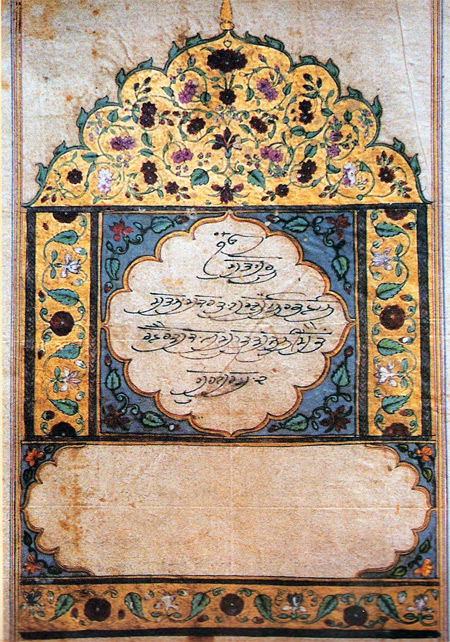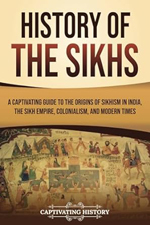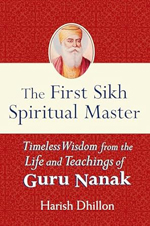
By Dr. KAZI NURUL ISLAM
Professor and Chairman of the Department of World Religions and Culture at the University in Bangladesh.
Note: We understand that, especially in matters of faith, there are often differing viewpoints on some issues. ClevelandPeople.Com does its best to present accurate information in a respectful way. We rely on our ambassadors to help us with this. Your comments are always welcome. Thank you.
MOOL MANTAR
Crux of the Sikh Belief
Recited daily for Empowerment
IK ONKAR
There is only ONE GOD
SAT NAAM
Truth is HIS NAME
KARTA PURKH
HE is the CREATOR
NIR BHAU
HE is without fear
NIR VAIR
HE is without hate
AKAAL MOORAT
HE is timeless, without form
AJOONI SAIBHANG
HE is beyond birth/death, Self-created
GUR PARSAAD
HE can be known by the Guru's grace
This is the opening verse of Guru Granth Sahib consisting of 1430 pages. The only religious document conceived, written and compiled by the 10 Gurus of the Sikh faith.
Though all the religions of the world teach love, preach sympathy for others and encourage Man to exercise utmost self-restraint and have most profoundly been a source of inspiration for the highest good of mankind, the world today is torn by conflicts, enmity and religious hatred.
In this predicament, a lasting and peaceful society is impossible unless different faiths are understood in their proper perspectives. Therefore, it is necessary that people belonging to different faiths understand each other better. This necessitates a constant dialogue and effort to generate moral and hearty religious thinking.
The advocates of all the religions of the world emphasize the importance of certain virtues and moral values. Only these can foster unity and cohesion of mankind. But the moral and religious values cannot be invoked by force. This can be achieved through the exchange of words, kind words, sincere words and loving words that can reach the deepest fathoms of the heart.
There is no religion without peace and no peace without religion. We must admit that peace and religion are complementary to each other. When the good of all is desired with an undivided mind peace will definitely be ours. But people belonging to different faiths, in most cases, have betrayed religious ideals and commitment to peace. The time has come when this betrayal must be corrected. And this can be and should be done through knowledge, dialogue and demonstration of the fact that love, compassion, selflessness and the inner force of truthfulness have ultimately greater power than hatred, enmity and self-interest.
There was a time when various religions, precisely because of their own convictions, were unable to cooperate and were even antagonistic to each other. But the times have changed to a great extent. Improvement in the means of transportation has made the earth smaller. Now religions, in-spite of historic differences, must seek to unite all people for the attainment of world peace. Unless the peoples of faith come closer to each other the irreligious and antireligious forces will gain the upper hand. And this may lead to the further breaking up of the moral fibre of the human society. But at all cost we must preserve the moral aspect of the texture of human society.
Religious people represent a vast majority of the peoples of the world. But unfortunately, we are a confused, divided and silent majority. The religious people of the world have been quite silent for long, and their silence has worked against human welfare. Our division, our timidity, and our silence left the mighty forces of terrorism, fanaticism, racism, poverty, and war unchallenged. The suffering of millions, for whom we should have been advocates, friends, and spokespersons, has paid for our silence.
The time has come when religionists, instead of antagonizing each other because of what we once thought was a religious conviction, should cooperate with each other in order to contribute to the cause of peace for mankind. Before I explain my own position as to what makes me feel that the Guru Granth Sahib is a model for interreligious understanding in today's world, let me speak a few words about the attitude of Islam towards other religions. I believe this will help us to understand Guru Granth Sahib's attitude towards other traditions better. Islam seeks to bring about reconciliation between the followers of different faiths and establish a basis of respect and honour among them. Islam can claim uniqueness in that for a person to be a Muslim it is mandatory that he/she must have respect for the people of others' faiths, must believe in all the prophets and in all the revealed texts. The Qur'an teaches us that God has sent His revelation to all the people from time to time and no section of mankind has been left without Divine guidance. Many of the prophets of the Old Testament have been mentioned by name in the Qur'an, and so also is Jesus, who along with other prophets, is highly revered and honored by the Muslims all over the world.
It is stated in the Qur'an: "Say (O Muslims): We believe in Allah and that which is revealed unto us and that which was revealed unto Abraham and Ishmael, and Isaac, and Jacob and the tribes, and that which the Moses and Jesus received, and that which the Prophets received from their Lord. We make no distinction between any one of them, and unto Him we have surrendered."
If a person belies any one of them, that person belies all and if a person confirms and believes in one of them that person must and ought to confirm all. "One who does not believe in any one of the Prophets would be a kafir, though that person must believe in all the Prophets raised in India, China, Persia, Egypt, Africa, Europe and any other countries of the world." But a Muslim cannot definitely say about a particular person outside the list of the prophets named in the Qur'an, whether that person was or was not a Prophet. Muslims are also not permitted to say anything against the holy peoples of other religions.
Sikhism goes one step further in its attitude forwards other religions and in its worldview.
Sikhism is a religion, which was founded on the principles of interfaith understanding, mutual respect and harmony. From the very beginning the leaders and the followers of this tradition preached the principles of interfaith respect, dialogue and understanding. To be a Sikh it is mandatory that he/she must respect and accept all other religions of the world and at the same time must protect, guard and allow the free-practice of the customs and rituals of others. The Guru Granth Sahib teaches its followers to love all creation as God's own manifestation. Acceptance of all faiths, and interfaith tolerance and understanding are basic to the teachings of Guru Granth Sahib.
History of the Sikh tradition shows remarkable consistency in the pursuit of these ideals and in the defense of the right to free worship of peoples of all faiths.
The Sikh Gurus perceived that there was lack of real love among the people and, therefore, they always laid great stress upon spiritual practices and preached the philosophy of one God, the supreme Reality. They understood that a new strength and vigor had to be
imported into the field of religion and religious practices, it had to be brought home to the minds of the people that there really existed no differences in places of worship resorted to people of different faiths.
That is why Guru Gobind Singh, the tenth and the last Guru, states:
"The temple and the mosque are the same, the Hindu worship and the Muslim prayer are the same, all people are the same; it is through erroneous judgment they appear different ... All human beings have the same eyes, the same ears, the same body, the same build, a compound of earth, air, fire and water ... let no person, even by mistake, suppose there is a difference."
The Sikh Gurus systematized all the past Hindu and Islamic philosophies and brought a confluence in an organized manner for the temporal and spiritual uplift of all humanity without any discrimination. Guru Nanak made friends with both Hindus and Muslims. He never discriminated against any one. He treated the whole world as his own family and all human beings as his brothers and sisters. He raised his voice against injustice anywhere. Like him, all the Sikh Gurus were large-hearted. None of them were parochial or narrow-minded, communal or caste-ridden. They set out for the regeneration of mankind.
The Guru Granth Sahib is a unique sacred text in the history of world religions. The pattern of this text was conceived and worked out in such a way that it can integrate various religions and varnas of India, spiritually, religiously and emotionally. Guru Nanak gave the idea of this kind of scripture, his successor Gurus subscribed to it and worked to collect material for most of the Granth.
Guru Arjan collected most of the materials and contributed a major portion of the Granth in the form of his bani and completed editing this sacred text in 1604 C.E. Guru Gobind Singh added the hymns of Guru Teg Bahadar to the Adi Granth and then installed it as the Guru-Eternal in 1708 C.E., abolishing the personal guru ship thereon.
The unique catholicity and egalitarian approach of Guru Arjan is evident in the fact that, other than the hymns of the Sikh Gurus, he incorporated the compositions of as many as thirty men of God, belonging to various castes, creeds, religions and vocations. Among them were Jaidev of Bengal, Surdas of Awadh, Namadev, Pipa, Sain, Kabir, Ravidas and Bhikhan of Uttar Pradesh, Dhannu of Rajasthan and Farid of Multan.
Kabir was a weaver, Sadhna was a butcher, Namdev a seamster, Dhana a farmer, Sain a barber, Ravidas a cobbler, Farid a Muslim Sufi ... It may be mentioned here that Guru Gobind Singh hosted fifty two poets in his court to translate various ancient texts of India with the object of unifying the people of the subcontinent through their own literature and culture.
What a wonderful example of catholicity! What a wonderful instance of egalitarianism! And what a remarkable endeavor for interfaith
understanding!! I salute all those who made this possible.
Sikhism advocates four kinds of unity: unity of God, unity of mankind, unity of religions and unity of classes. In fact, the Oneness of God and the essential oneness of humanity is the basic teaching of Guru Granth Sahib. Guru Nanak was an advocate for peace and unity. For all the religions of the world, he envisaged a fellowship of faiths. His efforts for creating an atmosphere for world-reconciliation and world-amity were much ahead of his time.
The attitude of the Sikh Gurus towards the leaders or founders of other faiths and their sacred texts is unique and genuinely
praiseworthy. For instance, the attitude of Guru Nanak towards Prophet Muhammad (peace be upon him) was one of unbounded love and
respect. In a verse which is given in the Janam Sakhi of Bhai Bala, Guru Nanak is stated to have said:
dita nur muhammadi, ditha nabi rasool
Nanak qudrat dekh ke, khudi ghei sab bhool.
"I have seen the light of Muhammad (with my mind's eye). I have seen the prophet and the messenger of God; in other words, I have
understood his message or imbibed his spirit. After contemplating the glory of God, my ego was completely eliminated."
In the same spirit Guru Gobind Singh said in his Bacchittar Naatak ("The Wonderful Drama") that prophet Muhammad was a divine messenger and a great man of religion and faith. Guru Arjan had profound respect for Mian Mir, a celebrated Muslim Sufi and had the foundation stone of the Darbar Sahib (Golden Temple) lain by him. This instance alone is enough to prove the magnanimity and catholicity of the Sikh Gurus.
It may be mentioned here that Muslim scholars had also tremendous appreciations for the Sikh Gurus. For instance, Mirza Ghulam Ahmad, the founder of the Ahmadiyya sect of Islam, observed in his Sat Bachan that Guru Nanak was a treasure house of divine knowledge and knower of all mysteries. The most famous poet-philosopher of this subcontinent, Dr. Mohammad Iqbal, in one of his immortal verses expressed that Guru Nanak was a perfect human being and awakened India from a dormant, dreamy condition to the realization of God.
To the Muslims, Hindus, Christians and all other faiths, Guru Nanak advises: "Practice within your heart the teachings of the Qur'an, Vedas and the Bible; restrain the ten sensory organs for straining into evil. Tie up the contentment, and you shall be acceptable."
Guru Nanak vehemently opposes those who criticize the holy books of other religions. He categorically asks his followers: Do not say that the Vedas, the Bible and the Qur'an are false. Those who do not contemplate them are false. Guru Arjan says:
"Neither am I Hindu nor Musalman
This body and spirit is of Allah-Rama"
He also asserts: "Says Nanak! The Guru removeth delusion, Only Allah is Parbrahma."
This indicates he had tremendous respect for God variously seen as Christ, Allah, Ram and Parbraham; in other words, he loved all religious traditions in the same spirit.
The principle, which underlies the pattern of Guru Granth Sahib, is that every Sikh gives the same reverence to the Sikh Gurus, which he gives to the other 30 contributors writers of this sacred text. A Sikh bows to the Guru Granth Sahib in reverence and recites the bani of all the writers included with the same devotion and respect. It may be noted here that in the Darbar Sahib as well as in all other
historical or local gurudwara, the hymns of all these saints, Gurus and Sufis of India are sung.
The followers of the Guru Granth Sahib pay homage to these Christian, Muslim and Hindu saints ... in addition to the Gurus ... and recite their writings with equal amount of faith, reverence and devotion.
This is not so and cannot be so in any other religion of the world.
Guru Nanak strongly pleaded for an egalitarian society where all people could be regarded as equals. In order to eradicate caste distinction and the social stratification based on caste system, he created two institutions: Sangat and Pangat. Sangat is the community congregation
where, all people sit together for divine contemplation and prayer and Pangat is the free kitchen where different people irrespective of their caste and creed sit at the same level and dine together.
The distinction between skin color, poor and rich is forgotten, because all share the same food at the same place. This was, indeed, a revolution against the in egalitarian society.
A successful revolution without a single drop of blood!
These Sangat and Pangat not only promote egalitarianism but also promote and enhance interfaith understanding.
Let me give an example of the gurdwara inside Dhaka University campus. In Bangladesh there is not a single Sikh citizen. Despite that, on every Friday in this gurdwara, hundreds of people belonging to different religious backgrounds attend Sangat and join Pangat and these are promoting interfaith understating in this country. Not only in Bangladesh where there is a gurdwara, but also particularly in Europe and America, the sangat and pangat have enriched the prestige of the Sikh community and helped to promote inter-religious harmony.
Guru Nanak argues that if God is one, then all the souls coming from Him are of the same essence. The natural corollary of monotheism is oneness of humanity. All the Gurus regarded the whole of mankind as an organic unity and repudiated the distinction on a mundane plane. They held that the distinction of color, language or territory cannot and should not form the ground for claims of superiority of one group over the other.
Guru Nanak strongly emphasized the highest common factor in all the religions of his time, which were existing side by side but unfortunately clashing with one another. He conceived the idea of a new type of scripture, formed a wholesome approach and attitude towards fellow religions and philosophical schools. He provided directions for religious co-existence, philosophical accommodation and social integration. As we have already mentioned above, Guru Nanak did not believe in the false barriers of religions and rigidities of caste. Some scholars hold that he was an ideal Muslim among Muslims and a model Hindu among Hindus. He believed in the fatherhood of God and brotherhood of man and he not only propagated this philosophy but also practiced this vigorously in his life.
Universalism is a cardinal value of Sikhism. It is not bracketed with a particular ethnicity or a particular region. The whole earth has been revered by Guru Nanak as "mother earth" and as a result he did not believe in any Promised Land or holy land.
Sikhism is universal because its primary essential concerns - social, political, cultural and economic - are of a universal nature, embracing humanity as a whole. Guru Gobind Singh held that God cannot be bound to a particular creed, place or era. He (God) cannot be bracketed with any particular ethnicity. Indeed, He is the Lord of all the peoples of the world. This makes Sikhism a truly universal religion.
In today's pluralistic world, the teachings of the Guru Granth Sahib can play a vital and constructive role. Sikhism not only acknowledges and appreciates other faiths but also accepts their validity and integrates worldly life with the idea of divinity. Guru Granth Sahib seeks to unite people belonging to different faiths and holds that the object of religion is not to divide mankind, but to unite it, not to act like scissors and tear asunder the social fabric, but to act like a needle and sew it together. In today's world we must feel that we are all members of one great family of beings, having different forms of working. We must remember that we are all marching towards the spiritual realizations of truth and love.
Some in ignorance say, 'My religion is the only one, my religion is the best'.
But when his heart is illumined by true knowledge, he knows that above all these wars of sects and sectarians presides the one invisible eternal all-knowing bliss. In fact, the different faiths are like spokes of a wheel in which God forms the hub. Therefore, let us - all the religionists - radiate towards that hub and find peace and solace.
Guru Granth Sahib, I am quite confident, can be a guiding force to the world in this regard.
The original document was enhanced and converted to this booklet format by Paramjit Singh, SEVADAR for Humanity
Download this booklet (complete with images)
Top of Page
Back to Cleveland Sikhs
| 






